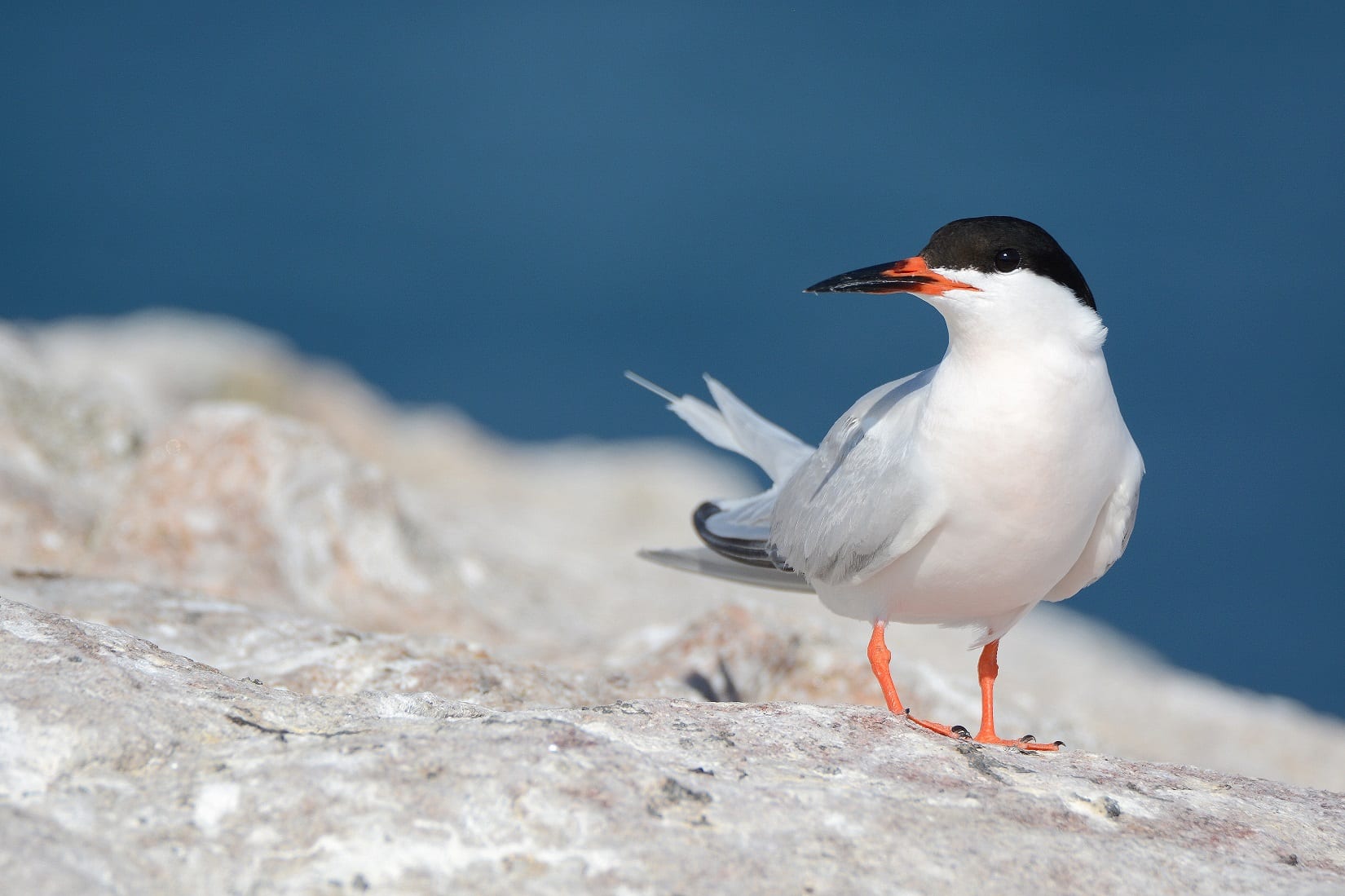Rosalind Skillen and Oonagh Duggan
BirdWatch Ireland is delighted to have embarked on an important new marine project that is aimed at both identifying important seabird habitats and advocating for their protection.
Entitled ‘Securing the future of Ireland’s seabirds and their habitats’, the project has a goal to gather all existing data to determine Important Bird Areas (IBAs) in Irish marine waters and to advocate for their designation as marine Special Protected Areas (SPAs). The project, funded by the Flotilla Foundation, will be a collaborative effort between BirdLife Europe, BirdLife International and BirdWatch Ireland.
Ireland is home to internationally important seabird populations, with our marine waters hosting 24 breeding species of seabirds, including 69% of the European population of Roseate Terns. Ireland’s marine area is enormous, with our waters representing 8% of the EU’s marine area. According to the newly-published seabird census (2015-2021), 11 of the 21 seabird species with comparable data have declined since the last census (1998-2002) across the UK and Ireland. The Black-legged Kittiwake has declined by 36% in Ireland since the previous census and the Puffin is a globally Red-listed bird of conservation concern and declining in Ireland.
According to the government’s most recent report to the European Commission on the status of Ireland’s birds, the most significant current pressures and threats to seabirds in Irish waters are overfishing, plastic pollution, recreational activities including at breeding colonies and invasive species, with offshore renewables looming as an additional threat.
The Irish government is currently designating marine SPAs after falling way behind in its legal obligations under the EU Birds Directive to designate areas important for the life cycle of seabirds and waterbirds in the marine.
Using available seabird data, our team of scientists will work to identify priority marine sites that qualify as Important Bird and Biodiversity Areas. The main aim of an IBA is to secure the long-term designation and conservation of sites that are of critical importance for birds and biodiversity. To determine whether a site is critically important for seabird conservation efforts, marine sites will be assessed against BirdLife International’s IBA criteria [1]. This criteria includes the application of robust bird data, like the sizes and trends of seabird populations, and provides a common currency that all IBAs adhere to. This creates consistency, enables comparability between sites at national and international level and ensures that sites selected as IBAs have true significance for the international conservation of bird populations.
Crucially, areas fulfilling BirdLife International’s criteria [1] for Important Bird and Biodiversity Areas (IBAs) are also recognised by the European Court of Justice (ECJ) and the European Commission (EC) as sites that should be designated by Member States as Special Protected Areas. A network of SPAs at sea is needed in order to meet the needs of our breeding and wintering seabirds and our wintering waterbirds. To date, there has been no comprehensive assessment of IBAs in Irish marine waters and this has led to a lack of a clear basis to demonstrate insufficient designation of SPAs. Identifying marine areas in Irish waters qualifying as IBAs should therefore provide the basis for additional SPA designations by the Irish government. In addition to progressing the designation of new SPAs based on a robust scientific methodology and IBA criteria, the project will also progress the development and establishment of specific management measures for SPAs. Designating sites for birds is one thing but ensuring that the pressures and threats are addressed is absolutely critical. Otherwise, these designations will be ineffective.
In conclusion, our new project ‘Securing the future of Ireland’s seabirds and their habitats’ is an important step to positively shape and impact how we care for our seabirds and marine habitats for decades to come, and it is crucial that this is done right. The large amount of seabird tracking and at-sea survey data available for Ireland’s marine waters provides a huge opportunity when it comes to comprehensive IBA identification, while also contributing to the bigger picture of identifying globally important sites. As the name suggests, this project ‘Securing the future of Ireland’s seabirds and their habitats’ will prove vital to the future survival of seabirds in Ireland.
[1] Criteria for Important Bird and Biodiversity Areas (IBAs): http://datazone.birdlife.org/site/ibacriteria.


